
Science China-Chemistry
Scope & Guideline
Catalyzing Global Chemistry Innovations
Introduction
Aims and Scopes
- Covalent Organic Frameworks (COFs) and Metal-Organic Frameworks (MOFs):
The journal consistently publishes research on the synthesis, functionalization, and applications of COFs and MOFs, exploring their potential in catalysis, gas storage, drug delivery, and environmental remediation. - Photocatalysis and Solar Energy Conversion:
A significant focus is on the development of photocatalytic materials for solar energy conversion processes, including water splitting and CO2 reduction, highlighting advancements in efficiency and stability. - Electrocatalysis and Energy Storage:
Research on electrocatalytic processes for energy conversion and storage, such as lithium-ion and sodium-ion batteries, is prevalent, with attention to materials design, interface engineering, and mechanistic studies. - Asymmetric Synthesis and Organocatalysis:
The journal emphasizes the development of novel asymmetric synthetic methods, including organocatalysis, which are critical for the synthesis of chiral compounds and pharmaceuticals. - Nanomaterials and Nanotechnology:
There is a strong emphasis on the synthesis and application of nanomaterials in various fields, including electronics, biomedicine, and environmental science, focusing on their unique properties and functionalities. - Polymer Chemistry and Materials Science:
Research on the design and synthesis of advanced polymers, including biodegradable and self-healing materials, is a core area, with applications in coatings, drug delivery, and energy devices.
Trending and Emerging
- Sustainable Chemistry and Green Processes:
There is a growing emphasis on sustainable practices, including the development of eco-friendly materials and processes that minimize environmental impact, such as biomass conversion and waste recycling. - Advanced Materials for Energy Applications:
Research is increasingly focused on the development of novel materials for energy applications, particularly in the context of renewable energy technologies, including advanced batteries, supercapacitors, and hydrogen storage. - Biomimetic and Bioinspired Approaches:
The journal is seeing a rise in studies that draw inspiration from natural systems to develop new materials and processes, particularly in the fields of catalysis, drug delivery, and biosensing. - Artificial Intelligence and Machine Learning in Chemistry:
There is an emerging trend towards utilizing AI and machine learning for materials discovery, reaction optimization, and predictive modeling, significantly impacting research methodologies in chemistry. - Multifunctional Nanomaterials for Biomedical Applications:
Research in multifunctional nanomaterials, particularly those designed for targeted drug delivery, imaging, and therapy, is on the rise, reflecting the integration of chemistry with medical applications.
Declining or Waning
- Traditional Organic Synthesis:
There has been a noticeable decrease in papers focusing solely on traditional organic synthesis methods, as the field shifts towards more innovative and sustainable approaches, such as flow chemistry and green synthesis. - Inorganic Coordination Chemistry:
Research in the area of classical inorganic coordination compounds has waned, possibly due to the growing interest in more complex materials and the integration of inorganic components into hybrid systems. - Fundamental Theoretical Chemistry:
Theoretical studies focusing on basic principles without experimental validation or application have become less prominent, as researchers increasingly seek to combine theory with practical applications.
Similar Journals
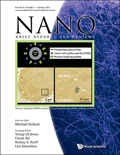
NANO
Advancing Knowledge at the NanoscaleNANO is an esteemed academic journal published by World Scientific Publishing Co. Pte Ltd, focusing on the frontier of nanoscience and nanotechnology. With ISSN 1793-2920 and E-ISSN 1793-7094, this journal has been a pivotal platform for disseminating innovative research from 2008 to 2024. Located in Singapore, NANO has established itself within the academic community, currently holding notable rankings in the Q3 Category for both Condensed Matter Physics and Materials Science, as well as a Q4 Category status in Nanoscience and Nanotechnology. Though it operates under a non-open access model, its contributions are invaluable for researchers, professionals, and students seeking to stay abreast of the latest advancements and interdisciplinary approaches within the nanoscale domain. By providing in-depth articles, reviews, and insights, NANO plays a significant role in advancing our understanding of materials at the nanoscale, thereby fostering innovation and collaboration across related fields.

ACTA CHIMICA SINICA
Elevating Chemical Research Standards GloballyACTA CHIMICA SINICA, published by SCIENCE PRESS, is a distinguished peer-reviewed journal in the realm of Chemistry, specifically focusing on general and miscellaneous chemistry fields. Since its inception in 1982, the journal has consistently contributed to the advancement of chemical research in China and beyond, maintaining a reputable standing within the academic community, evidenced by its 2023 Scopus ranking of #197 out of 408 in its category. With a current impact factor placing it in the Q3 quartile, ACTA CHIMICA SINICA aims to disseminate innovative research findings, covering a wide spectrum of topics within the discipline. Although it is not an open-access journal, it offers various access options through institutional subscriptions, ensuring that its high-quality content is available to a broad audience. Researchers, professionals, and students alike will find this journal a vital resource for keeping abreast of developments in the field and for contributing their own findings to an engaged scientific community.
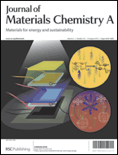
Journal of Materials Chemistry A
Leading the Charge in Sustainable Materials ResearchJournal of Materials Chemistry A, published by the Royal Society of Chemistry, stands as a leading peer-reviewed journal in the fields of Chemistry, Materials Science, and Renewable Energy. With an impressive ranking within the top quartile (Q1) across these disciplines in 2023, this journal not only showcases groundbreaking research but also addresses pivotal challenges in sustainable materials and energy. Spanning from 2013 to 2024, it serves as a vital platform for scientists and engineers to present innovative solutions and advances in materials that directly contribute to environmental sustainability. Accessible to a broad audience, the journal's contributions are essential for anyone engaged in the development of new materials and technologies that promise to shape a greener future. With a commitment to high-quality open access publishing, the Journal of Materials Chemistry A is instrumental in disseminating impactful research to enhance scholarly communication and foster collaboration in an increasingly interconnected research landscape.
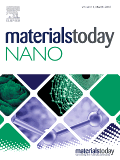
Materials Today Nano
Empowering Knowledge in Nano-Materials for Global ImpactMaterials Today Nano, published by Elsevier, is a premier academic journal dedicated to the forefront of nano-materials research, encompassing innovations and advancements in biomaterials, condensed matter physics, electronic, optical, and magnetic materials, as well as materials chemistry. With an impressive Q1 ranking across multiple categories, including biomaterials and materials chemistry, this journal serves as a essential platform for researchers, professionals, and students aiming to contribute to and stay informed on cutting-edge developments that push the boundaries of materials science. Its open access model allows for wider dissemination of high-impact findings, ensuring that the research reaches a global audience. Operating from the United Kingdom, Materials Today Nano plays a vital role in fostering interdisciplinary collaboration and advancing scientific understanding in this rapidly evolving field.
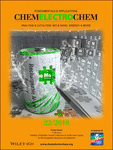
ChemElectroChem
Catalyzing knowledge in electrochemical research.ChemElectroChem is a premier open-access journal published by WILEY-V C H VERLAG GMBH, focusing on the interdisciplinary fields of catalysis and electrochemistry. Established in 2014 and actively publishing until 2024, this journal boasts an impressive reputation, currently ranked in the Q2 category for both catalysis and electrochemistry according to the 2023 metrics. With an Scopus ranking placing it in the 74th percentile for Electrochemistry and 61st for Chemical Engineering and Catalysis, ChemElectroChem serves as an essential platform for researchers, professionals, and students dedicated to advancing knowledge and fostering innovation in these critical scientific domains. Since its transition to open access in 2023, the journal aims to maximize the dissemination of cutting-edge research and facilitate the exchange of ideas among global scholars, thereby enhancing the accessibility and impact of high-quality science within the community. For those engaged in the ever-evolving conversations around energy storage, conversion processes, and sustainable solutions, ChemElectroChem is an invaluable resource.

REVIEWS IN INORGANIC CHEMISTRY
Elevating Understanding Through Comprehensive ReviewsREVIEWS IN INORGANIC CHEMISTRY, published by Walter de Gruyter GmbH, is a distinguished academic journal that serves as a vital resource for researchers, professionals, and students within the field of inorganic chemistry. With its ISSN 0193-4929 and E-ISSN 2191-0227, this journal has made a significant impact on the discipline, holding a commendable Q2 ranking in the 2023 category of Inorganic Chemistry, placing it in the 81st percentile among its peers according to Scopus rankings. Continuously published since its inception, with converged years spanning from 1985 to 1990 and 1992 to 2024, it features comprehensive reviews encompassing the latest advancements, methodologies, and theoretical frameworks in the subject. Researchers will find IDEAL insights and valuable discussions that keep them abreast of trends and challenges in the domain, essential for driving innovation and collaboration. The journal’s commitment to quality and rigorous peer review highlights its importance in advancing inorganic chemistry research, making it an indispensable tool for academic excellence.

Inorganics
Advancing Inorganic Chemistry for a Global AudienceInorganics is a vibrant, peer-reviewed Open Access journal dedicated to advancing the field of inorganic chemistry, published by MDPI since 2013. Based in Switzerland, this journal aims to provide a dynamic platform for researchers, professionals, and students to share groundbreaking findings, fostering collaboration and innovation within the global scientific community. With an impressive Q2 ranking in the category of Inorganic Chemistry as of 2023, Inorganics stands out as a significant conduit for high-quality research that spans a wide range of topics from coordination compounds to metal-organic frameworks. Its commitment to accessibility ensures that cutting-edge research can be accessed, utilized, and built upon by a diverse audience, thereby amplifying its impact. Join the conversation in Inorganics and contribute to the ever-evolving landscape of inorganic chemical research.

JOURNAL OF CLUSTER SCIENCE
Exploring the Frontiers of Cluster ScienceJOURNAL OF CLUSTER SCIENCE, published by SPRINGER/PLENUM PUBLISHERS, is a prominent and influential journal in the fields of Biochemistry, Chemistry, Condensed Matter Physics, and Materials Science. With an ISSN of 1040-7278 and E-ISSN of 1572-8862, this journal has been contributing to scientific discourse since its inception in 1990 and continues to publish cutting-edge research through 2024. It holds a respectable position in the academic landscape with its category quartiles indicating a Q3 ranking in Biochemistry and Q2 rankings in Chemistry, Condensed Matter Physics, and Materials Science as of 2023. The journal's noteworthy Scopus rankings further underscore its relevance, particularly a rank of #82 in Condensed Matter Physics, showcasing its impact and the quality of research disseminated. Although it does not currently offer open access options, it remains a key resource for researchers, professionals, and students who are invested in understanding the complexities of cluster science and its interdisciplinary applications.

ACS Macro Letters
Catalyzing Collaboration in the World of MacromoleculesACS Macro Letters, published by the American Chemical Society, is a leading journal in the fields of Inorganic Chemistry, Materials Chemistry, Organic Chemistry, and Polymers and Plastics. Established in 2012, this journal has swiftly ascended to the forefront of chemical research with an impressive reputation, as evidenced by its 2023 Scopus rankings placing it in the first quartile across multiple categories. The journal's objective is to disseminate timely and concise articles that advance the study of macromolecules and their applications, making it an essential resource for researchers, professionals, and students alike. With a focus on fostering innovation and facilitating collaboration within the chemical community, ACS Macro Letters presents a robust platform for scientists to share their groundbreaking findings. Being based in the United States, it serves as a central hub for global discourse in the chemical sciences, although it does not currently offer Open Access options. The journal's commitment to high-quality content is further underscored by its prestigious impact factor and acceptance into elite academic quartiles, signifying its influence and importance in shaping future research.
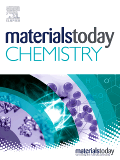
Materials Today Chemistry
Pioneering Research in Chemistry and MaterialsMaterials Today Chemistry, published by Elsevier Science Ltd, is a leading journal in the field of materials science, with a primary focus on innovative research and advancements in chemistry relating to materials. Operating under ISSN 2468-5194, the journal has made a significant impact in various specialized areas such as biomaterials, catalysis, colloid and surface chemistry, and polymers, achieving a Q1 ranking across these categories in 2023. With its commitment to high-quality, peer-reviewed content, Materials Today Chemistry serves as an essential platform for researchers, professionals, and students aiming to stay at the forefront of materials research. The journal provides an open access model, enabling wide dissemination of research findings and fostering collaboration among the scientific community. Its esteemed ranking on Scopus, including a remarkable percentile position in materials chemistry and catalysis, underscores its importance in advancing the understanding and application of novel materials. Whether you're delving into cutting-edge synthesis techniques or exploring the latest in materials applications, Materials Today Chemistry remains a pivotal resource for breakthrough discoveries and pivotal insights in the realm of materials science.